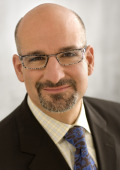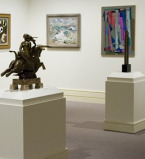I can’t let today’s special section on museums in the New York Times pass without handing out raspberries, for the dumbest things that were said, and strawberries, for the smartest. Plus, something for Tom Campbell, of the Met.
Raspberries to:
Ann Philbin, director, Hammer Museum, UCLA: “We can’t just be about art anymore.
 Museums are the new community centers.”
Museums are the new community centers.”
Lori Fogarty, director, Oakland Museum: “We’re moving away from the authoritarian voice of a museum. We’re taking the approach that everyone’s perspective is valid.”
Ford Bell, president of the American Association of Museums: “People don’t expect the museum visit to be passive. They need more than three dry sentences of wall text.”
Strawberries to:
Neal Benezra, director, SF MoMA: “If you cut excessively — and I think I can say this is wisdom for our current situation in our field right now — the public will lose interest in you. It’s
 a very fine line, but you can create a recession of your own making if you’re too extreme in the reduction of your program.”
a very fine line, but you can create a recession of your own making if you’re too extreme in the reduction of your program.”
And Benezra again: “A really great museum that grows to maturity dedicates itself to its collection. I would ultimately like to see a 50-50 ratio without cutting the exhibition program.”
Bruce B. Dayton, museum trustee: “A real strong interest in art — that’s the No. 1 criterion [for recruiting trustees]. And then the ability to give and the ability to raise money.”
Lora Urbanelli, director, Montclair Art Museum: “We’re all talking about how to get this next crop comfortably fluent, if not conversant, in the arts. We have to provide people with the tools to learn how to look.”
Best Straddle:
Thomas P. Campbell, director, Metropolitan Museum: “This is a good moment to refocus and reinvigorate. We want people to know we’re here and have been for 138 years. We’re a place of infinite experiences. Last year there were something like 20,000 different events from lectures to tours. A tour leaves every 15 minutes. It’s really quite phenomenal.”


